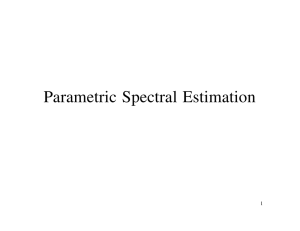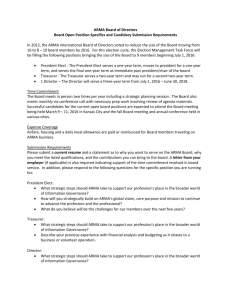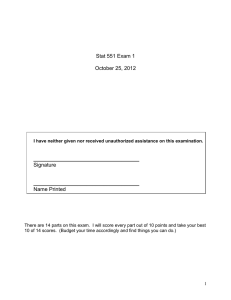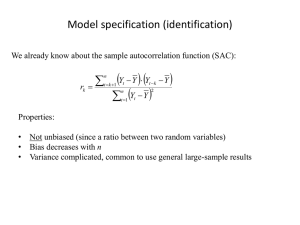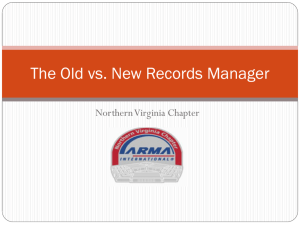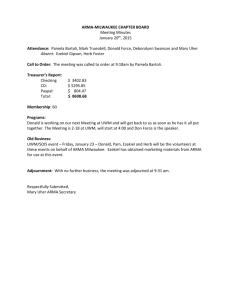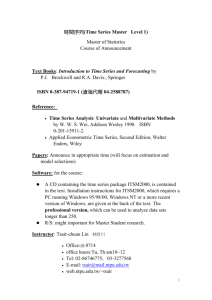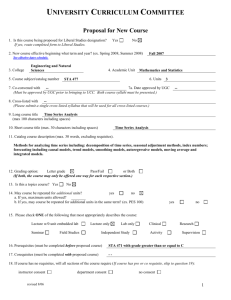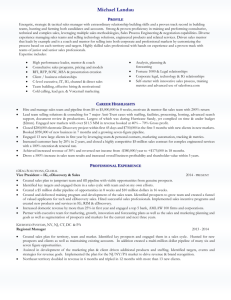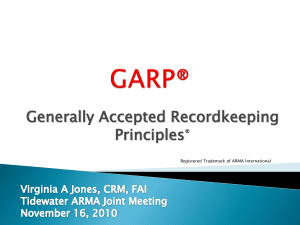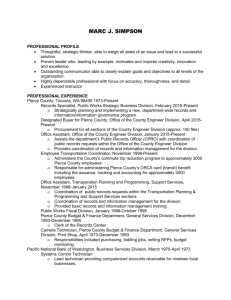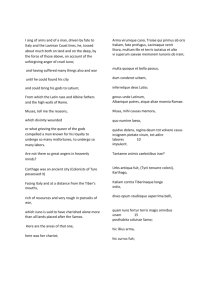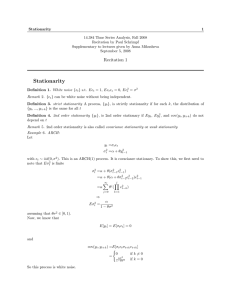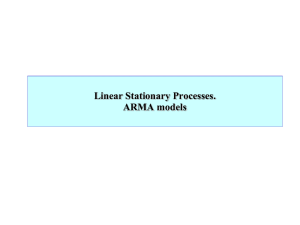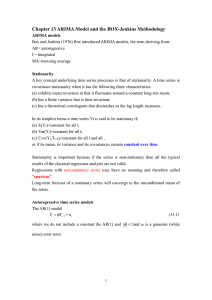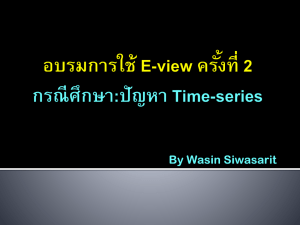Lecture 2 - WordPress.com
advertisement
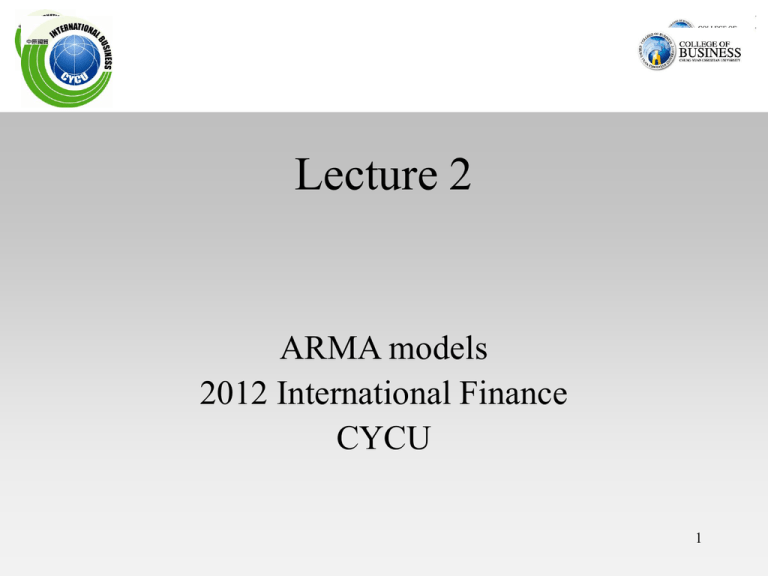
Lecture 2
ARMA models
2012 International Finance
CYCU
1
White noise?
• About color?
• About sounds?
• Remember the statistical definition!
2
White noise
• Def: {t} is a white-noise process if each
value in the series:
– zero mean
– constant variance
– no autocorrelation
• In statistical sense:
– E(t) = 0, for all t
– var(t) = 2 , for all t
– cov(t t-k ) = cov(t-j t-k-j ) = 0, for all j, k, jk
3
White noise
• w.n. ~ iid (0, 2 )
iid: independently identical distribution
• white noise is a statistical “random”
variable in time series
4
The AR(1) model (with w.n.)
• yt = a0 + a1 yt-1 + t
• Solution by iterations
•
yt = a0 + a1 yt-1 + t
•
yt-1 = a0 + a1 yt-2 + t-1
•
yt-2 = a0 + a1 yt-3 + t-2
•
•
y1 = a0 + a1 y0 + 1
5
General form of AR(1)
t 1
t 1
i 0
i 0
y t a 0 a1i a1t y0 a1i t i
• Taking E(.) for both sides of the eq.
t 1
t 1 i
t
i
E( y t ) E a 0 a1 E a1 y0 E a1 t i
i 0
i 0
t 1
E( y t ) a 0 a a y 0
i 0
i
1
t
1
6
Compare AR(1) models
• Math. AR(1)
1 a1t
t
yt a 0
(a 1 ) y 0
1 a1
• “true” AR(1) in time series
1 a1t
(a1 ) t y 0
E(y t ) a 0
1 a1
7
Infinite population {yt}
• If yt is an infinite DGP, E(yt) implies
a0
lim y t
(note: a constant)
t
(1 a1 )
• Why? If |a1| < 1
1 a
t
yt a 0
(a 1 ) y 0
1 a1
t
1
8
Stationarity in TS
• In strong form
– f(y|t) is a distribution function in time t
– f(.) is strongly stationary if
f(y|t) = f(y|t-j) for all j
• In weak form
– constant mean
– constant variance
– constant autocorrelation
9
Weakly Stationarity in TS
Also called “Covariance-stationarity”
• Three key features
– constant mean
– constant variance
– constant autocorrelation
• In statistical sense: if {yt} is weakly
stationary,
– E(yt) = a constant, for all t
– var(yt) = 2 (a constant), for all t
– cov(yt yt-k ) = cov(yt-j yt-k-j ) =a constant,
for all j, k, jk
10
AR(p) models
p
y t a 0 a i y t i t
i 1
– where t ~ w. n.
• For example: AR(2)
– yt = a0 + a1 yt-1 + a2 yt-2 + t
• EX. please write down the AR(5) model
11
The AR(5) model
• yt=a0 +a1 yt-1+a2 yt-2+a3 yt-3+a4 yt-4+a5 yt-5+
t
12
Stationarity Restrictions for
ARMA(p,q)
• Enders, p.60-61.
• Sufficient condition
p
| a
i 1
i
| 1
• Necessary condition
p
a
i 1
i
1
13
MA(q) models
• MA: moving average
– the general form
q
y t a 0 t b i t i
i 1
– where t ~ w. n.
14
MA(q) models
• MA(1)
yt a 0 t b1 t 1
• Ex. Write down the MA(2) model...
15
The MA(2) model
• Make sure you can write down MA(2) as...
yt a 0 ε t b1ε t 1 b2ε t 2
• Ex. Write down the MA(5) model...
16
The MA(5) model
• yt=a0+a1yt-1+a2yt-2+a3yt-3+a4 yt-4 + a5 yt-5 + t
17
ARMA(p,q) models
• ARMA=AR+MA, i.e.
– general form
p
q
i 1
i 1
y t a 0 a i y t i ε t b i ε t i
• ARMA=AR+MA, i.e.
– ARMA(1,1) = AR(1) + MA(1)
yt a 0 a i yt i ε t bi ε t i
18
Ex. ARMA(1,2) & ARMA(1,2)
• ARMA(1,2)
yt a 0 a1 yt 1 ε t b1 ε t 1 b2ε t 2
• Please write donw: ARMA(1,2) !
19

